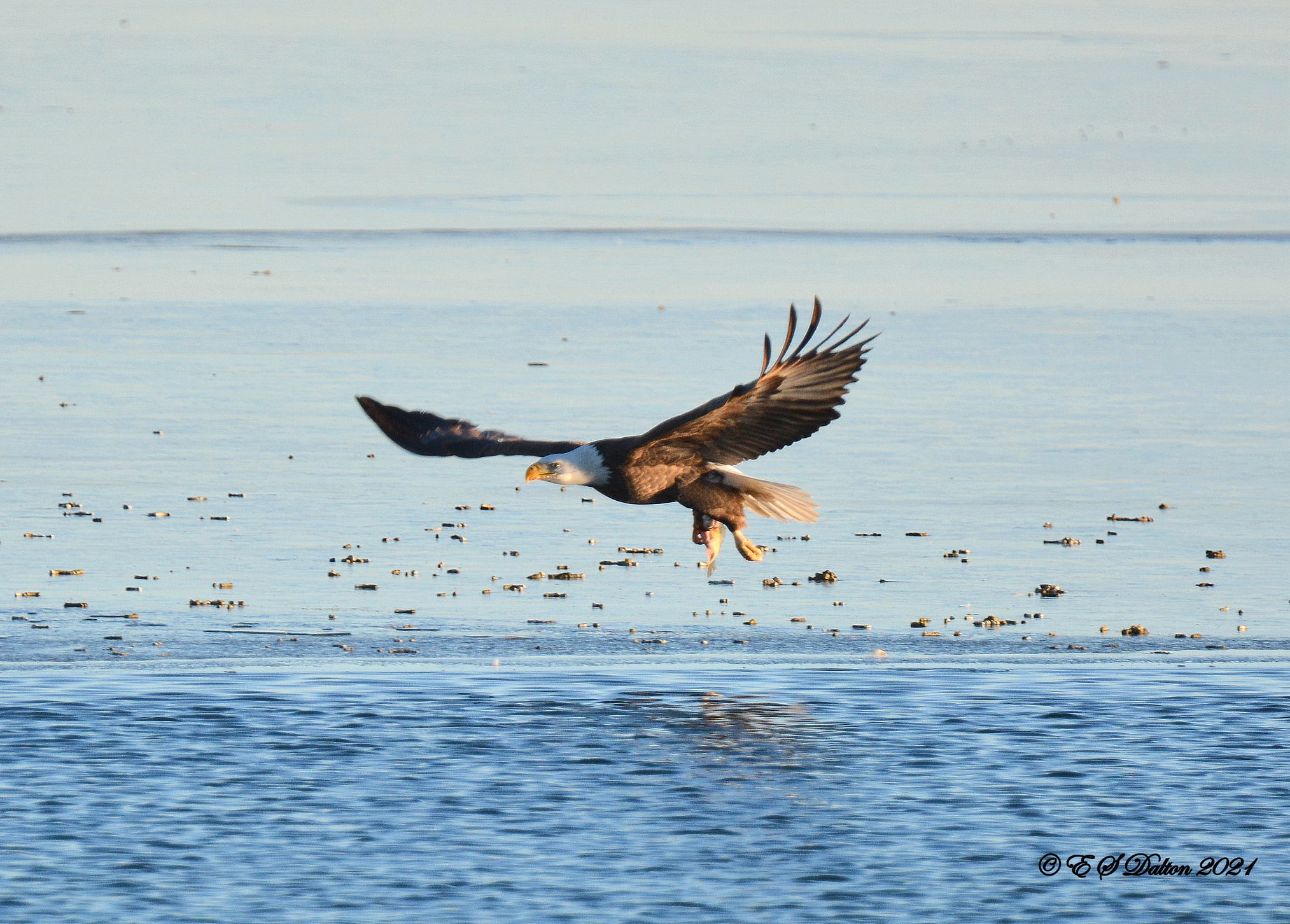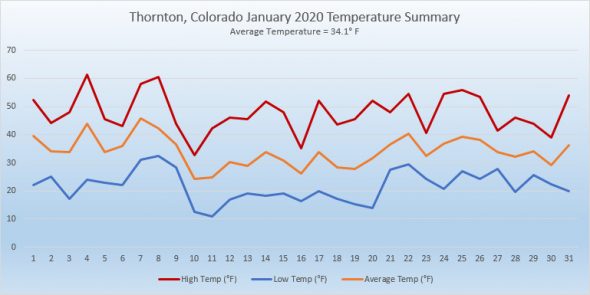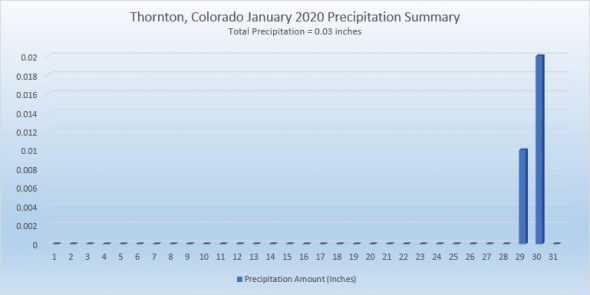Winter wind in Colorado can be quite nasty oftentimes reaching damaging levels and we see numerous occurrences of that in our look back at this week in Denver weather history. Also notable are storm system just a few years ago in 2006 and 2007 that dumped a good amount of snow on the Denver area.
25-26
In 1904…after a warm Christmas Day with a high temperature of 50 degrees…a late day cold front plunged temperatures to a low of 7 degrees…produced northeast winds sustained to 40 mph with gusts to 54 mph…and produced 5.2 inches of snow overnight for a late white Christmas. The maximum temperature on the 26th was only 16 degrees.
In 2014…a winter storm brought a rare Christmas Day snowfall to the Front Range Foothills and Urban Corridor… from the afternoon of the 25th to the evening of the 26th. Storm totals included: 12.5 inches…4 miles west of Boulder; 12 inches…4 miles southwest of Eldorado Springs and 4 miles south of Golden; 11 inches at Genesee; 10 inches near Allenspark…5 miles west of Chatfield Reservoir…5 miles southwest of Golden and near Tiny Town; 8 inches in Lakewood and Louisville; 7.5 inches in Niwot; 7 inches in Longmont; with 6 inches in Broomfield and Frederick. At Denver International Airport…5.1 inches of snowfall was observed.
25-31
In 1980…temperatures were unusually warm during the week between Christmas and New Year’s. High temperatures for the week ranged from the mid-50’s to the mid-70’s. Four temperature records were set. Record highs occurred on the 26th with 68 degrees…the 27th with 75 degrees…and the 30th with 71 degrees. A record high minimum temperature of 41 degrees occurred on the 27th.
26
In 1877…heavy snow fell during the early morning and totaled nearly 6 inches. Precipitation from melted snow was 0.58 inch. After the snowfall…a number of sleighs were seen on the city streets.
In 1879…after a morning low of 4 degrees below zero… The temperature climbed to a high of 57 degrees in the city.
In 1907…west winds were sustained to 40 mph. The Chinook winds warmed the temperature to a high of 62 degrees.
In 1949…west winds gusted to 50 mph at Stapleton Airport.
In 1998…intense…but localized…downslope high winds developed near Wondervu in the foothills southwest of Boulder. Winds frequently gusted to 100 mph with a highest reported wind gust to 104 mph. West winds gusted to only 43 mph at Denver International Airport.
26-27
In 1954…a major storm dumped heavy snow across metro Denver. Snowfall totaled 8.6 inches at Stapleton Airport. The storm produced the heaviest snowfall of the calendar year and was the only measurable snowfall in December.
In 1987…a snowstorm stalled in northeastern Colorado…giving metro Denver its worst winter storm in 4 years. Total snowfall from the storm ranged from 12 to 18 inches on the east side…1 to 2 feet in Boulder County…and 2 to 3 feet in western and southern parts of metro Denver. The largest reported snowfall was 42 inches at Intercanyon in the foothills southwest of Denver. Snowfall totaled 14.9 inches at Stapleton International Airport. Winds were light on the 26th…but increased as high as 40 mph on the 27th… Creating near-blizzard conditions and forcing complete closure of Stapleton International Airport for about 8 hours. The strong winds whipped drifts to 5 feet high on the east side of town. All interstate highways leading from Denver were closed on the 27th.
26-28
In 1979 a heavy snow storm dumped 6 to 10 inches of snow over the metro area and 15 to 20 inches at Boulder with up to 2 feet in the foothills west of Boulder. Heavy snowfall totaled 6.0 inches at Stapleton International Airport where north winds gusted to 21 mph. Most of the snow… 4.8 inches…fell on the 27th.
27
In 1895…west Chinook winds sustained to 44 mph with gusts to 48 mph warmed the temperature to a high of 52 degrees.
In 1901…an apparent cold front produced sustained north winds to 41 mph with gusts to 48 mph.
In 1957…northwest winds gusting to 52 mph produced some blowing dust across metro Denver.
In 1975…a northwest wind gust to 53 mph was recorded at Stapleton International Airport.
In 1976…a strong pacific cold front moving across metro Denver produced a northwest wind gust to 53 mph at Stapleton International Airport.
In 1990…high winds raked the eastern foothills with a wind gust to 84 mph clocked on Fritz Peak near Rollinsville. The strong northwest winds of 50 to 70 mph whipped newly fallen snow over higher areas into billowy clouds several hundred feet high that could be seen from most locations across metro Denver.
In 1996…another round of high winds developed over portions of the Front Range foothills during the morning hours. Several wind gusts from 70 to 100 mph were reported at Wondervu southwest of Boulder. West-northwest winds gusted to 38 mph at Denver International Airport.
In 2005…a trained weather observer in Georgetown recorded a wind gust to 94 mph. No damage was reported.
In 2007…a winter storm brought heavy snow to portions of the urban corridor and adjacent plains. Storm totals generally ranged from 3 to 7 inches. Locally heavier bands produced up to 10 inches of snow. In the urban corridor…storm totals included: 10 inches…10 miles south-southeast of Buckley AFB and at Castle Pines; 9.5 inches…4 miles south-southeast of Aurora and Kassler; 7.5 inches…2 miles southeast of Highlands Ranch; 7 inches in Aurora and Sedalia; 6.5 inches in Arvada…4 miles east of Denver and Lafayette; 6 inches in Castle Rock and Thornton. A measurement of 5.4 inches was taken at the former Stapleton International Airport. The official total for the month was 20.9 inches; making it the 6th snowiest December on record.
27-28
In 1997…high winds combined with fresh snow from a previous storm caused highways to become slick from drifting snow and near whiteout conditions in localized ground blizzards. Strong winds blew snow across the runways at Centennial Airport…which glazed over and formed areas of ice. Two planes were damaged when they slid off the runway while landing. No injuries were reported. Numerous accidents also occurred on I-25 and I-70 as ice formed under the same conditions. A rollover accident which injured 4 people on State Highway 93 near the Rocky Flats Environmental Test Facility was also attributed to the high winds. The high winds caused an office building and showroom under construction in Golden to collapse. The largest wall was 180 feet long and 28 feet high. Some high wind reports included: 86 mph at Golden Gate Canyon…72 mph near Conifer…and 70 mph at Jefferson County Airport and the National Center for Atmospheric Research on the mesa near Boulder. West-northwest winds gusted to 53 mph at Denver International Airport on the 27th.
In 1998…damaging downslope winds formed in and near the foothills. Peak wind gusts ranged from 71 to 114 mph. Numerous trees were blown down in Coal Creek Canyon and near Gross Reservoir. Power lines were blown down… Resulting in scattered outages. Peak wind reports included: 114 mph at Wondervu…92 mph in Golden Gate Canyon…88 mph in Coal Creek Canyon…and 79 mph 8 miles west of Conifer. West winds gusted to 46 mph at Denver International Airport on the 28th.
27-29
In 1983…a second surge of bitter cold air in less than a week was less intense. Record breaking low temperatures of 12 degrees below zero on the 28th and 15 degrees below zero on the 29th were accompanied by 3.7 inches of snowfall and northeast winds gusting to 23 mph.
Continue reading December 26 to January 1: This week in Denver weather history





